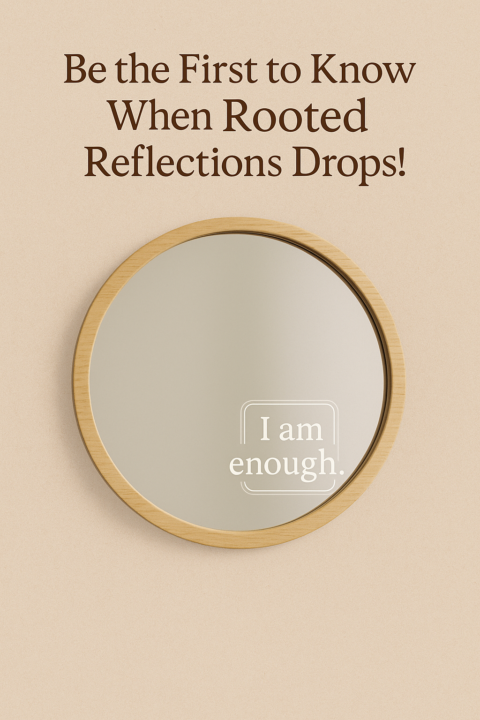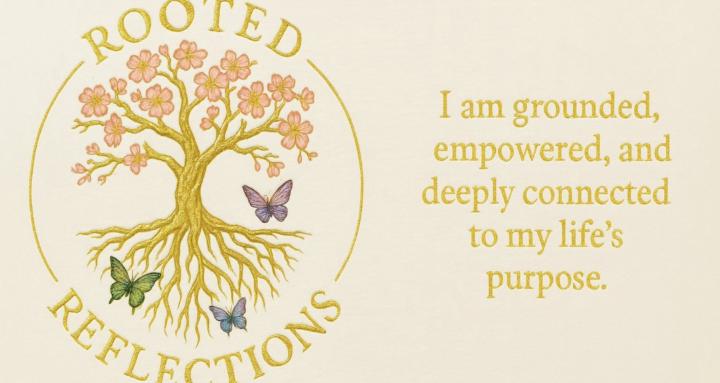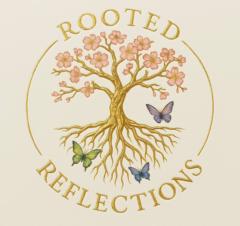
Write something
🌿 Mirror Affirmations Practice 201
Deepening Your Self-Talk & Embodiment Once you’ve built a daily habit with Mirror Affirmations 101, it’s time to take it deeper, shifting from simple repetition into emotional embodiment, visualization, and energy work. Step 1: Layer in Emotion - Don’t just say it, FEEL IT. - Ask yourself: If this affirmation were already true, how would I stand? How would my face look? How would I breathe? - Speak your affirmation from that energy. Step 2: Use Multi-Sensory Anchors - Touch: Place your hand on your heart or solar plexus while speaking. - Sound: Speak louder for confidence building or softer for self soothing. - Movement: Pair with slow, intentional gestures, like opening your arms as you say “I am open to receiving.” Step 3: Personalize & Rotate - Create affirmations specific to your current season of life (abundance, self-worth, love, health, etc.). - Rotate them weekly to match your focus. Example Rotation: - Week 1: Self-Worth → “I am worthy simply because I exist.” - Week 2: Abundance → “I am a magnet for wealth, opportunity, and joy.” - Week 3: Love → “I radiate love and it flows back to me effortlessly.” Step 4: Visual Embodiment - After speaking, close your eyes and visualize yourself living the truth of the affirmation. - See the details: where you are? what you’re wearing? who’s around you? how you feel? Step 5: Layer in Gratitude - End your session by saying:“Thank you for the woman I am becoming. She is already here.” Or " I am ready, I am available, show me how." - This blends manifestation with gratitude, anchoring you in the present and future at once. Advanced Daily Practice 1. Choose your affirmation for the week. 2. Stand before the mirror, breathe deeply three times. 3. Speak your affirmation slowly 3-5 times. 4. Match your body language to the truth of the statement. 5. Close your eyes, visualize the scene where this is real. 6. Say “thank you” out loud. Why it works:The more senses you engage, the more your brain accepts the affirmation as truth. Pairing affirmations with emotion, embodiment, and visualization turns them from words into lived identity.
0
0

🌿 Mirror Affirmations Practice 101
See it. Speak it. Become her. Mirror affirmations are a simple yet powerful daily practice that help you shift your self-talk, boost confidence, and embody the version of yourself you want to become. How it works: 1. Choose Your Affirmation: Pick one statement that feels empowering and true for the version of you you’re growing into. 2. Go to the Mirror: Stand or sit comfortably in front of a mirror. Look into your own eyes, not your hair, clothes, or anything else. Just you. 3. Speak It Out Loud: Say your affirmation clearly, slowly, and with intention. Imagine the words sinking into every cell of your body. 4. Repeat & Feel It: Repeat your affirmation 3–5 times (or more if you like). Feel the truth of the words as if they are already your reality. 5. Daily Consistency: Practice daily morning or night. Over time, these moments rewire your self beliefs and the way you show up in the world. Tips for Success:🌸 Use present tense (“I am”) to anchor into the now.🌸 Choose affirmations that feel just outside your current comfort zone but still believable.🌸 Pair with breath work. Deep inhale before speaking, slow exhale after.🌸 Add a visual anchor, like a Rooted Reflections affirmation cling, to make it part of your environment and a candle or sage. Why it works: Your subconscious mind believes what it repeatedly hears, especially from you. Speaking your truth to your reflection creates a deeper emotional connection, turning affirmations into a lived experience, not just words.
0
0

Welcome
I’m so happy you’re here. This community is a space for Humans who believe in the power of words, self-love, and daily intention. Here, we share affirmations, mirror work practices, and tools to help you reconnect with your worth and root into your truth. Whether you’re here for encouragement, inspiration, or to deepen your self-care rituals, know this is your reminder that you are powerful, worthy, and whole exactly as you are. In this group, you’ll find: - Tips for using affirmations and mirror work in your daily life - Sneak peeks at Rooted Reflections products and seasonal themes - Encouragement and support from women walking the same journey - Exclusive offers and first access to new products and events Take a moment to introduce yourself in the comments and share one affirmation that makes you feel strong and grounded. I’m so excited to grow and reflect with you here. Welcome to the community, your next chapter starts now. 🌸
0
0
1-3 of 3
powered by

skool.com/rooted-reflections-2015
Slow down, see yourself with love and truth. Speak your worth, practice daily affirmations, root to your higher version one reflection at a time.
Suggested communities
Powered by
